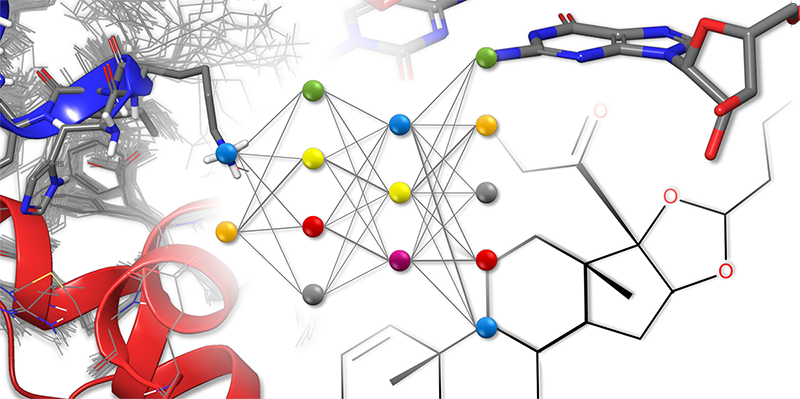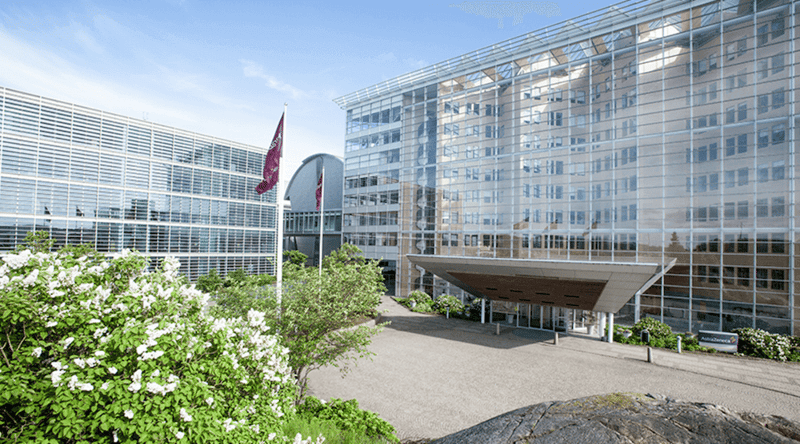OpenEye Scientific is proud to grant four Outstanding Junior Faculty Awards at the Fall 2022 American Chemical Society (ACS) National Meeting, at the McCormick Place Convention Center in Chicago, Ill., August 21-25, 2022. In addition to the awards ceremony, OpenEye will give four presentations. Times and dates for the award ceremony and presentations are listed below.
Outstanding Junior Faculty Award Details
OpenEye would like to congratulate the following winners of the ACS's Fall 2022 Outstanding Junior Faculty Award and the research they're presenting at the Fall ACS 2022 National Meeting:
- Kateri DuBay, University of Virginia, Department of Chemistry
Modeling the self-templating and seeding of homopolymer blocks within a one-pot A,Bcopolymerization
- Justin A. Lemkul, Virginia Tech, Department of Biochemistry
Electric Field Effects in DNA G-Quadruplexes Drive Ion Binding
- Bryan Richard Goldsmith,University of Michigan, Department of Chemical Engineering
Interpretable machine learning to elucidate structure-property relationships of catalysts and materials
- Connor W. Coley, Massachusetts Institute of Technology, Department of Chemical Engineering
Molecular Design from Virtual Screening to De Novo Generation with Models of Chemical Reactivity
Sponsored by OpenEye, ACS's OpenEye Outstanding Junior Faculty Award is designed to recognize the work of excellent researchers and assist those newer faculty members in gaining visibility within the computational chemistry community.
The Fall 2022 Outstanding Junior Faculty award ceremony will occur on August 23, 2022, at the Comp Chemistry Poster session from 7 - 9 p.m. Central Daylight Time (CDT) in Hall F2 at the McCormick Place Convention Center.
The awards will be presented by Caitlin Bannan, PhD, Scientific Software Developer II at OpenEye.
To find out more about the awards and how to apply, visit the OpenEye Outstanding Junior Faculty Award page on the ACS website.

Presentation Details
The OpenEye presentation titles, speakers, dates, locations, and abstracts are listed below.
Conformer generation for multi-component crystal structure prediction
Authors: Caitlin C. Bannan, Varsha Jain, Hari Muddana, Geoff Skillman
Date: Sunday, August 21, 2022, from 4:15 - 4:45 p.m.
Place: S401a - McCormick Place Convention Center
Abstract: Understanding polymorph risk is an important part of the drug development process. Physical properties, including solubility, bioavailability, and hygroscopicity, can vary significantly with the solid form of the drug. OpenEye has previously presented our automated protocols for predicting small molecule crystal structures beginning with any representation of the molecule (e.g. SMILES string). This process has four steps (1) generate a 3D conformer ensemble, (2) randomly pack conformers into crystal structures and optimize them with a force field, (3) QM optimize crystal structures and rank structures based on DFT enthalpy, and (4) calculate entropy and re-rank structures based on free energy. In this presentation, we will focus on steps 1 and 2 for multi-component crystal structures. Generating conformers for multi-component crystals requires sampling positions of two or more small molecules together. We generate possible multi-component conformations according to trends in experimental crystal structure databases and use physics-based methods to rank those conformers before packing. We show how this process can be used as an extension of step 1 to fit easily into our automated workflows for crystal structure prediction. These workflows will allow for polymorph risk assessment to include the formation of hydrates, salts, or co-crystals.
Crystal Structure Prediction: A Few Cases on Drug-Like Molecules
Speaker: Varsha Jain, PhD, Application Scientist, OpenEye
Date: Sunday, August 21, 2022, from 4:15 - 4:30 p.m.
Place: S403a - McCormick Place Convention Center
Abstract: Crystal structure prediction (CSP) has become a powerful tool in the pharmaceutical industry to assess the crystal form landscape of drug molecules, and to assess the risk of polymorph discovery in formulation. Despite many successes in CSP, crystal structures of some small molecules remain challenging due to high strain of the conformer and poor accuracy of quantum methods for ranking relative stability of polymorphs. Usually, molecules in the crystalline state adopt low-strain conformers with a strain energy of <=3 kcal/mol. However, there is a small fraction of drug-like molecules which crystalize with higher torsional strain energy due to steric hinderance and intramolecular hydrogen bonding. On the other hand, DFT functionals that accurately rank many small molecule crystal structures, can perform poorly in some cases due to poor intramolecular conformational energies. The present study examines a few such challenging cases to demonstrate conformational preference and energetics of these drug-like molecules using dimer-expansion approach and possible ways to overcome through these challenges.
Exploring a Hyperparameter Optimization Strategy for Weighted Ensemble Molecular Dynamics in the Cloud
More details are available for ACS members at https://www.acs.org.
Additional Resources
- To learn more about the conference, click here.
- To learn more about the agenda, click here.
- To register for the conference, click here.

